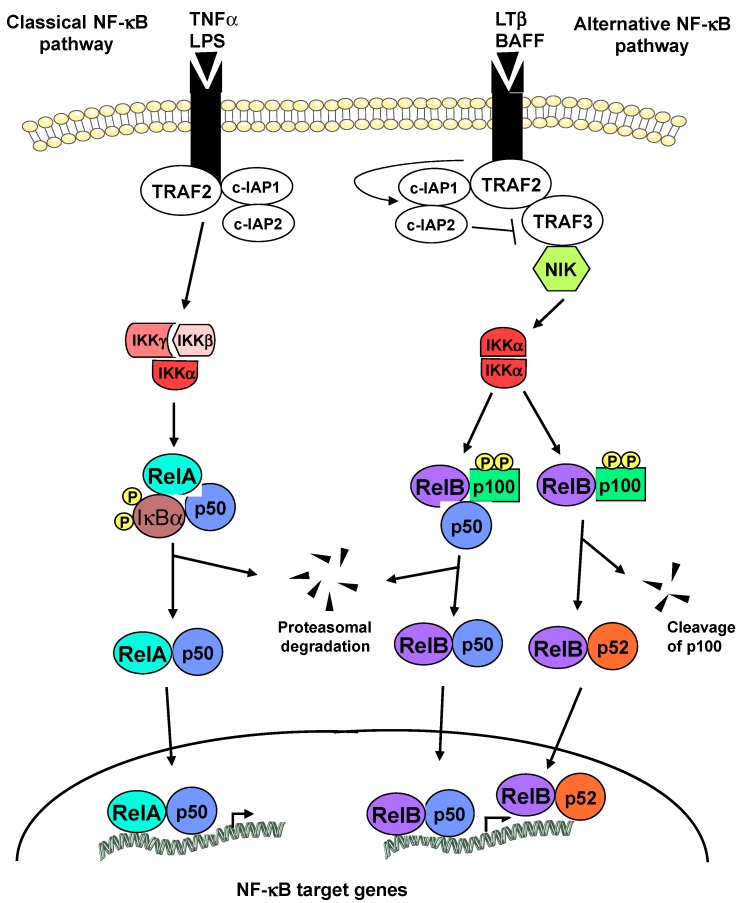Figure 1.
The classical and alternative NF-κB activation pathways. The classical NF-κB pathway (left): Activation of various receptors, such as TNFRs, causes phosphorylation of the inhibitory IκB proteins by the IKK complex, leading to their phosphorylation at two specific serine residues, and thereby their degradation by the proteasome 26S. Freed from their inhibitory interaction with the IκBs, RelA- and cRel-containing dimers translocate to the nucleus where they activate the transcription of specific NF-κB target genes. The alternative NF-κB pathway (right): Activation of a more restricted set of receptors (e.g., BAFF, lymphotoxin β), causes the degradation of TRAF3 by the cIAP1/2 E3 ligases, leading to the activation of the MAP3K NIK that activates IKKα, subsequently leading to the phosphorylation and proteasome-dependent processing of p100 and ultimately resulting in the release of either RelB/p50 or RelB/p52 dimers.

